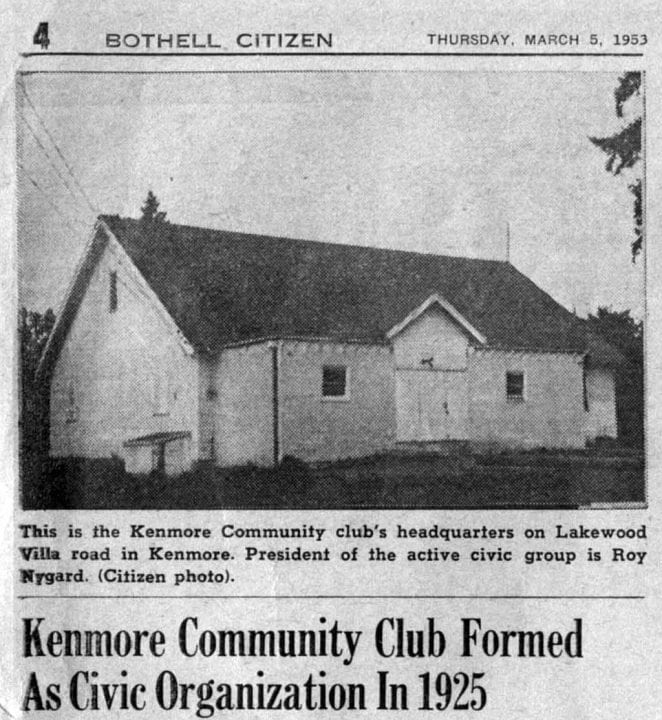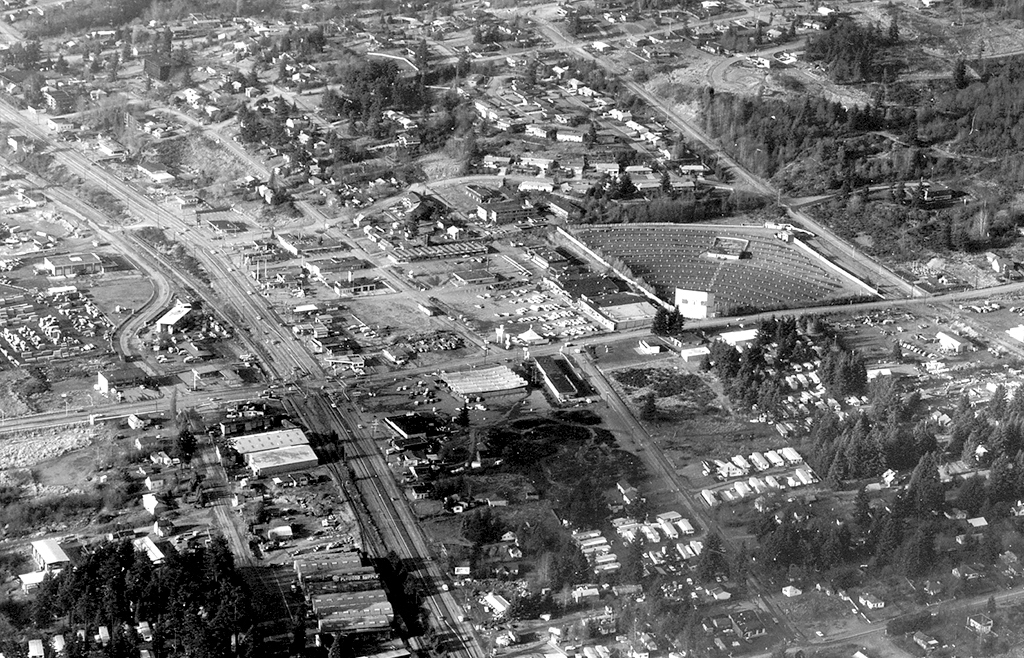Kenmore
-
Named for a village in Scotland, Kenmore is a community built on the hills and north shoreline of Lake Washington. The earliest known residents were the Sts’-ahp-absh people, who once wintered where the Sammamish River flows into Lake Washington. Non-Native settlers found their way to Kenmore even before Washington became a state in 1889. First came the loggers who moved timber by skid and rail to the shoreline, bound for mills down-lake. Early families brought the trappings of community life: a school and churches sprang up. Kenmore was famous (some say infamous) for its eating establishments, roadhouses, and dance halls along the Bothell Highway. Contraband whiskey was available during Prohibition. Business and commerce followed, with Kenmore becoming a road, rail, water, and air transportation hub. For several decades, Kenmore beaches were an idyllic lakeside destination. The community even had a nudist camp artfully located off the highway. In the World War II years, Kenmore became a bedroom community for Seattle and continues in that role today, although several thousand jobs now exist within its borders. Kenmore residents incorporated as a city in 1998. Its estimated population in 2018 was 23,093.
Tour Stops
Kenmore City Hall and The Hangar
Great Blue Heron Rookery and Viewing Area
Kenmore Mural
Schnitzelbank Building
Kenmore Community Club
ƛ̕ax̌ʷadis (Tl’ Awh-ah-dees) Park
Brew Row: “The Roadhouse Strip”
Burke-Gilman Trail
Plywood Supply
Kenmore Air Harbor
Log Boom Park
Inglewood Golf Club
Saint Edward State Park
Bastyr University
Rhododendron Park
Kenmore City Hall and The Hangar
18120 68th Avenue NE

Kenmore Mural
Bothell Way and 73rd Avenue NE

Schnitzelbank Building
7330 NE Bothell Way

Kenmore Community Club
7304 NE 175th Street

ƛ̕ax̌ʷadis (Tl’ awh-ah-dees) Park
7353 NE 175th Street

Brew Row: “The Roadhouse Strip”
7304 NE Bothell Way

Burke-Gilman Trail
7204 NE 175th Street

Plywood Supply
7036 NE 175th Street

Kenmore Air Harbor
6321 NE 175th Street

Log Boom Park
17415 61st Avenue NE

Inglewood Golf Club
6505 Inglewood Road NE

Saint Edward State Park
14445 Juanita Drive NE

Bastyr University
14500 Juanita Drive NE

Rhododendron Park
6910 NE 170th Street


Brought to you by HistoryLink
This tour created in collaboration with



